CNY goodies, the old-fashioned way
Chinese New Year is the most important festival on the Chinese calendar. This year the first day of the new year is on Monday. It is a time for people to celebrate with family and friends, and feast on traditional festive goodies. Some businesses still insist on making these goodies the traditional, painstaking way to preserve the taste of yesteryear. We visit four of them.









1. Sze Thye Cake Shop
Mr Koh Sun Liang, 69, has been making traditional Chinese confections such as peanut candy and sesame candy since he was 12.
He learnt his craft from experts from China at Sze Thye Cake Shop in Liang Seah Street. His father took over the shop in 1960 and he himself took over the reins in 1999.
The shop moved to its present location at Block 2, Beach Road, in 2003.
Mr Koh works and lives in the rented shop. He begins his day at 9am and closes shop at 8pm.
The two most sought-after items are the peanut candy and sesame candy, which are popular during Chinese New Year.
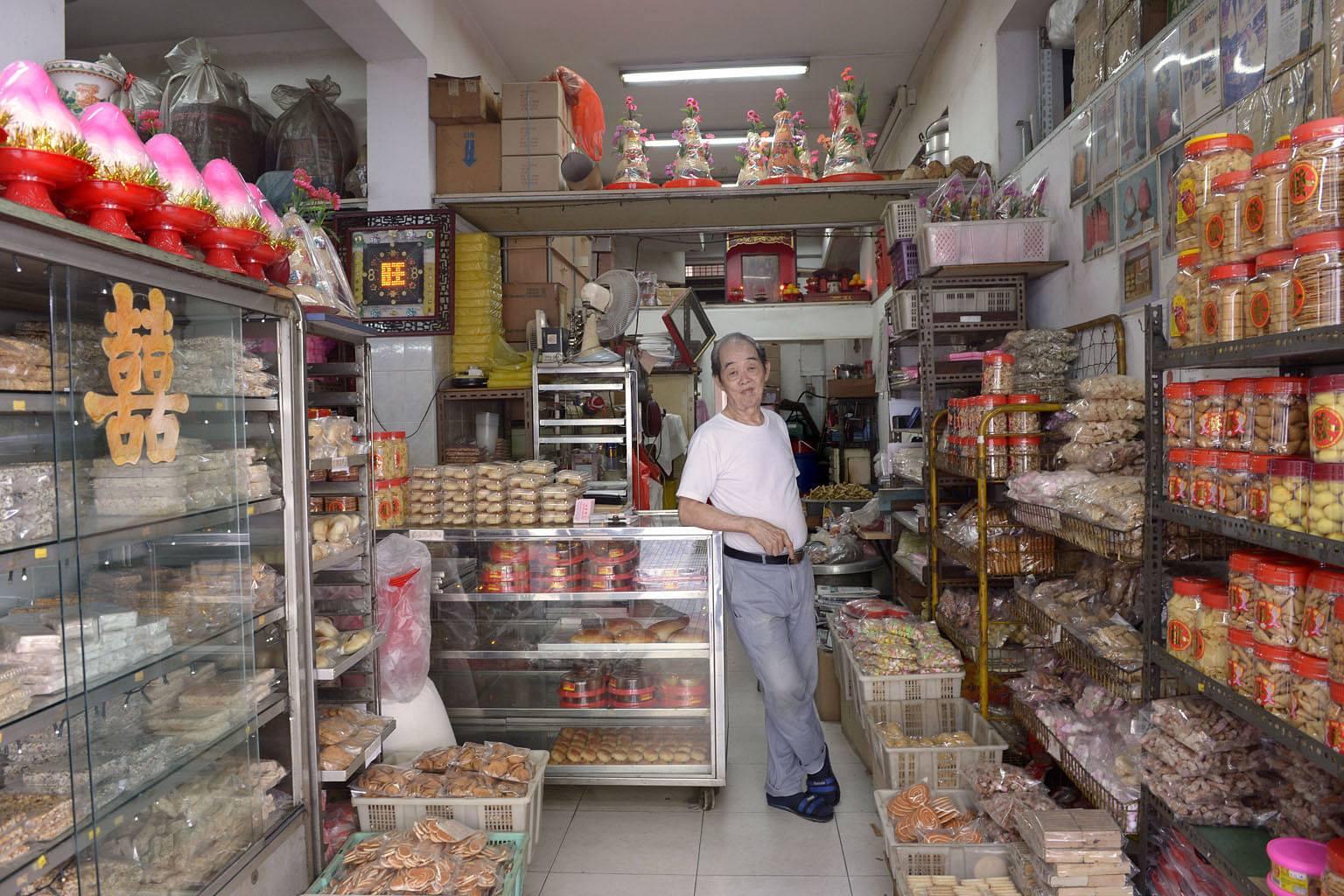
These days, he makes them less sweet than a generation ago as customers now like them that way.
"I will continue to make these pastries for as long as I can," says Mr Koh, who runs a one-man business.
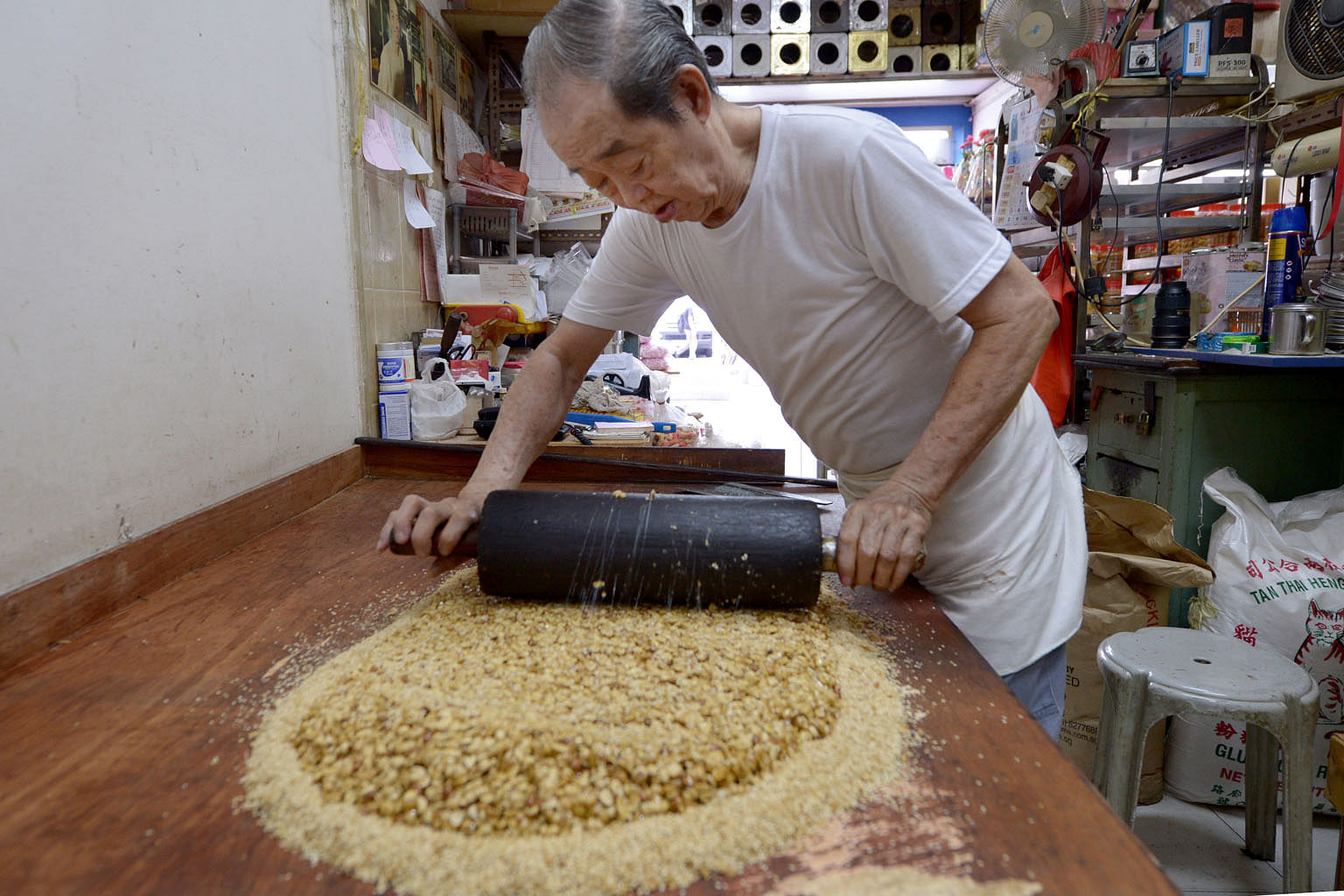
With no one for him to pass the business to, it will probably disappear when he can no longer make the confections.
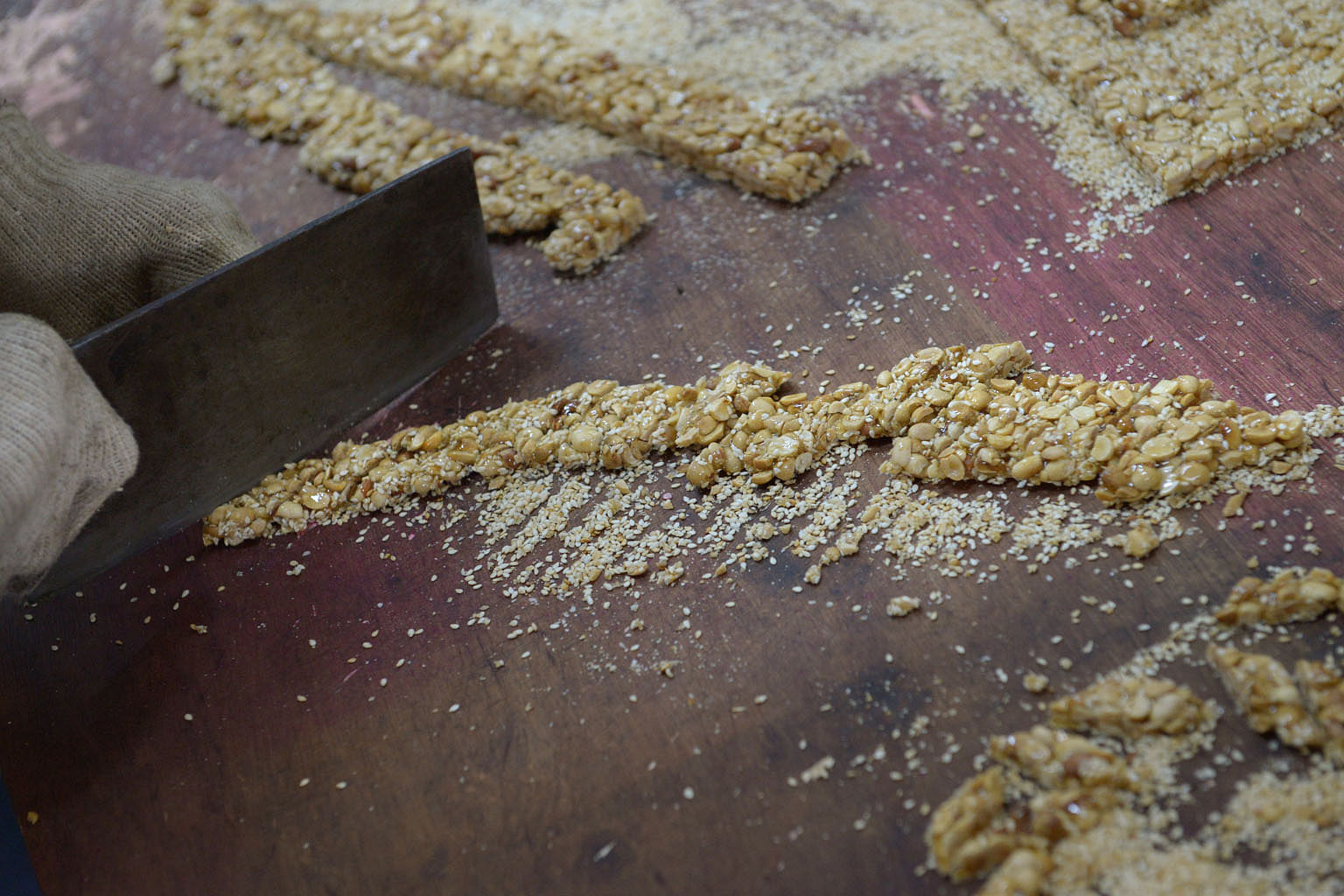
•Sze Thye Cake Shop is at Block 2, Beach Road, #01-4795.
2. Pine Garden's Cake
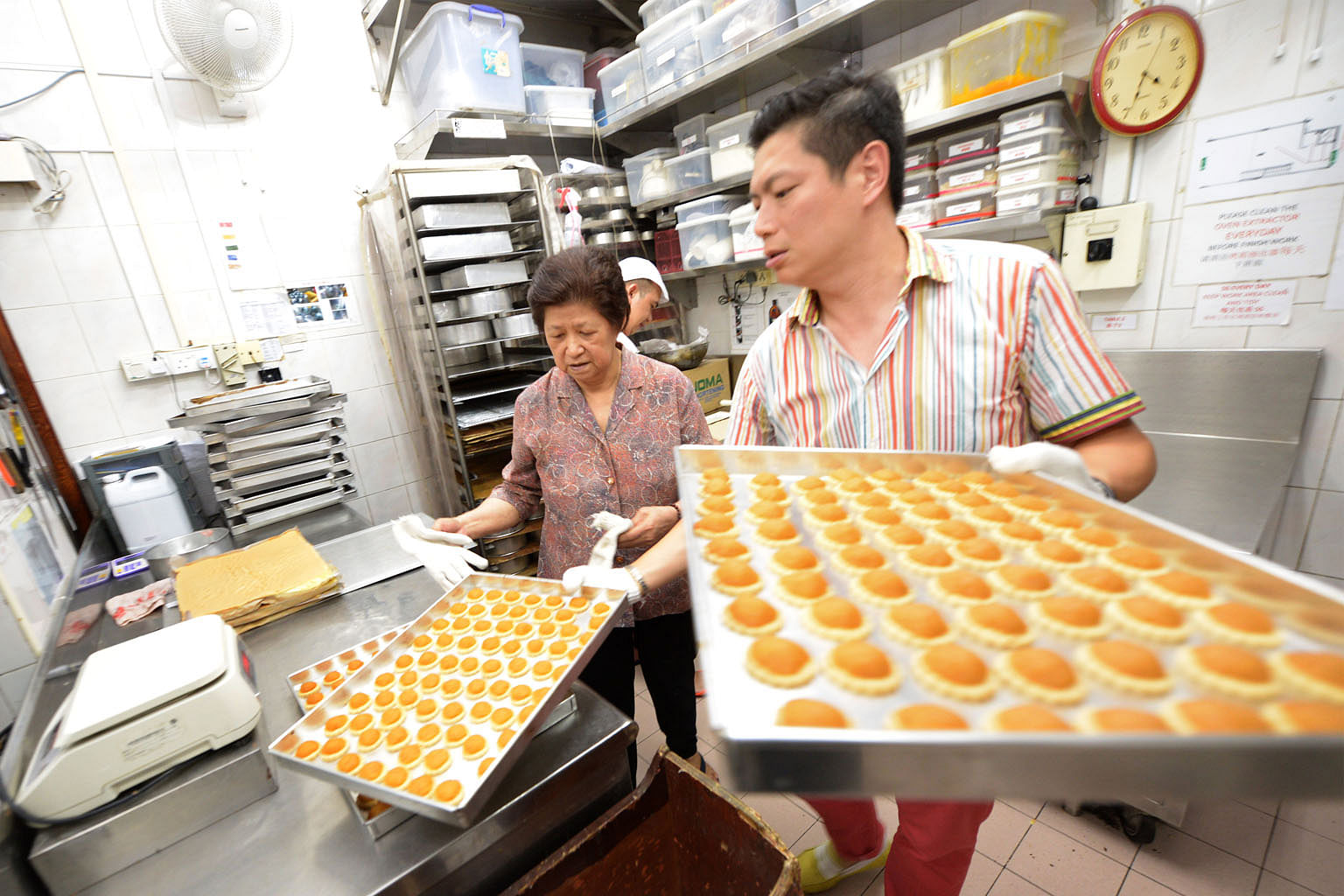
Pine Garden's Cake in Ang Mo Kio is a standout cake shop in the heartland.
Back in 1984, a group of four relatives ventured into the bakery business, with the aim of bringing bread home to feed their families.
The business has since grown and it became known for goodies such as its pineapple tarts, which are ranked among the best here.
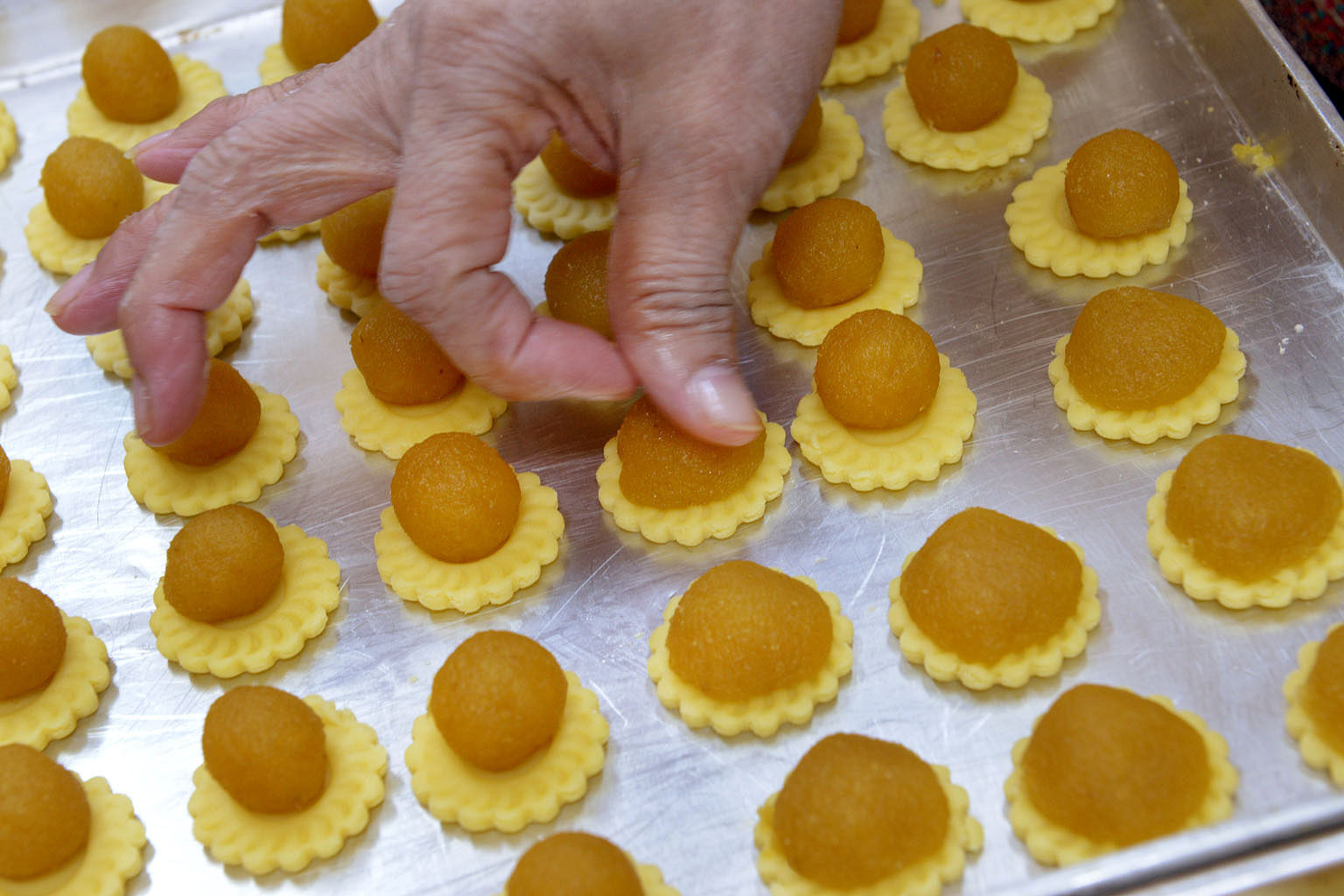
Indeed, these tarts, which are made only during the Chinese New Year season, are today one of the most popular items at Pine Garden.
Madam Lee Ah Moy, 75, one of the founders of Pine Garden's Cake, still makes the tarts with her pair of deft hands according to a family recipe.
Madam Lee, whom staff address as Ah Mah, says in Teochew: "I am not interested in cooking and baking. But since we ventured into this business, we cannot let each other down. We have to give our best."
Mr Wei Chan, 43, manager director and Madam Lee's nephew, says: "Demand for our tarts has increased five times from 10 years ago. It is now a staple Chinese New Year goodie which Singaporeans cannot do without."
The tarts are still made the same way using the same choice ingredients, such as pineapples from Malaysia. Even the German oven used to bake the tarts has been around for a long time - 32 years.
•The main outlet of Pine Garden's Cake is at Block 529, Ang Mo Kio Avenue 10, #01-2369.
3. Cake Chop Tai Chong Kok
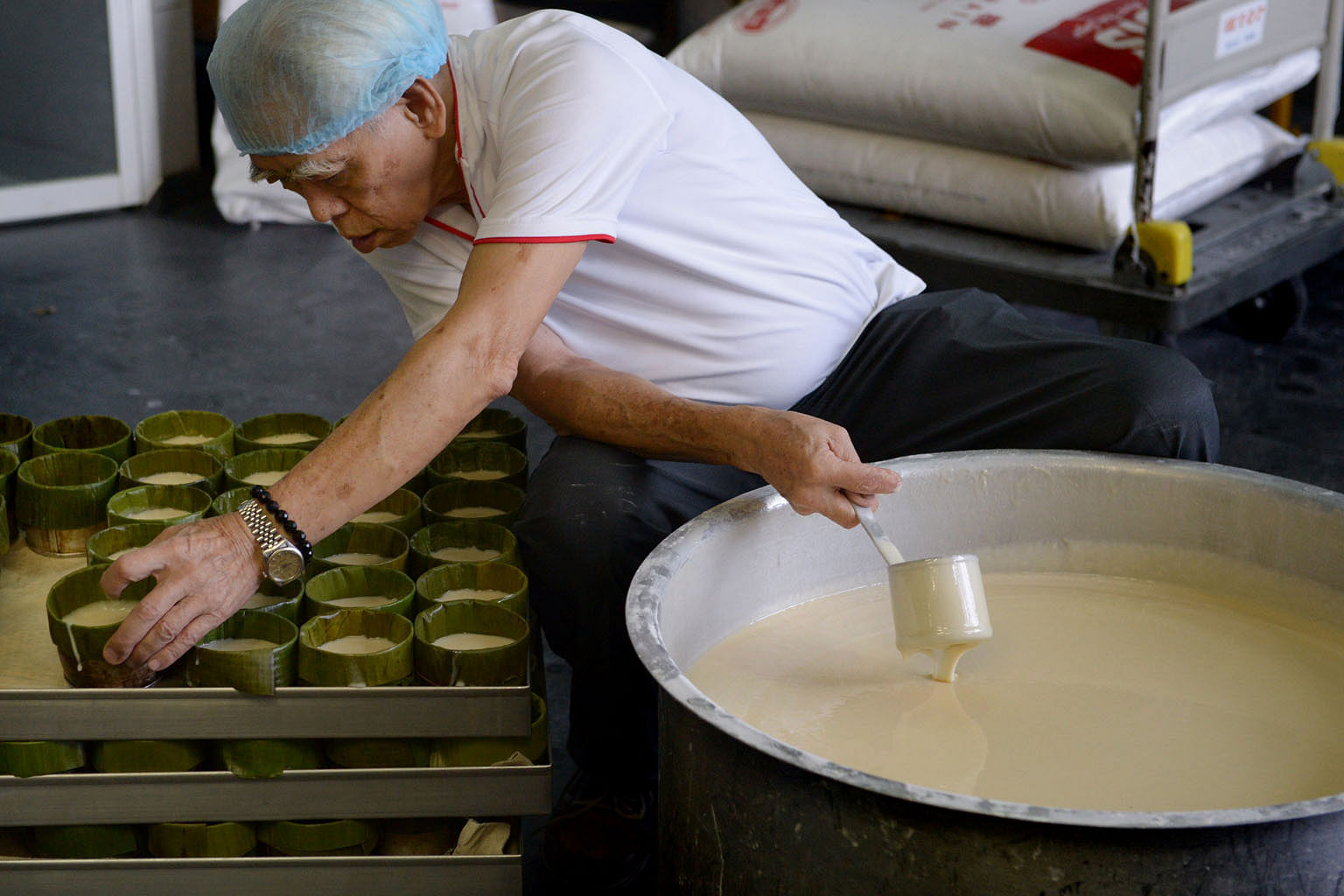
He is 77 and "retired".
But Mr Tham Wing Thong still helps out with kitchen operations at Chop Tai Chong Kok, a traditional confectionery business which has its flagship store in Sago Lane in Chinatown.
Started in 1935 by Mr Tham's father, the business has four retail outlets today.
The period approaching Chinese New Year is one of the busiest times of the year for the staff as they hunker down to make niangao, a traditional cake made of sweetened glutinous rice flour eaten during the Chinese New Year.
This sticky cake, which symbolises progression in the new year, accounts for a fifth of Chop Tai Chong Kok's annual revenue.
Says Mr Tham: "We still make the cake the laborious, old-fashioned way without preservatives."
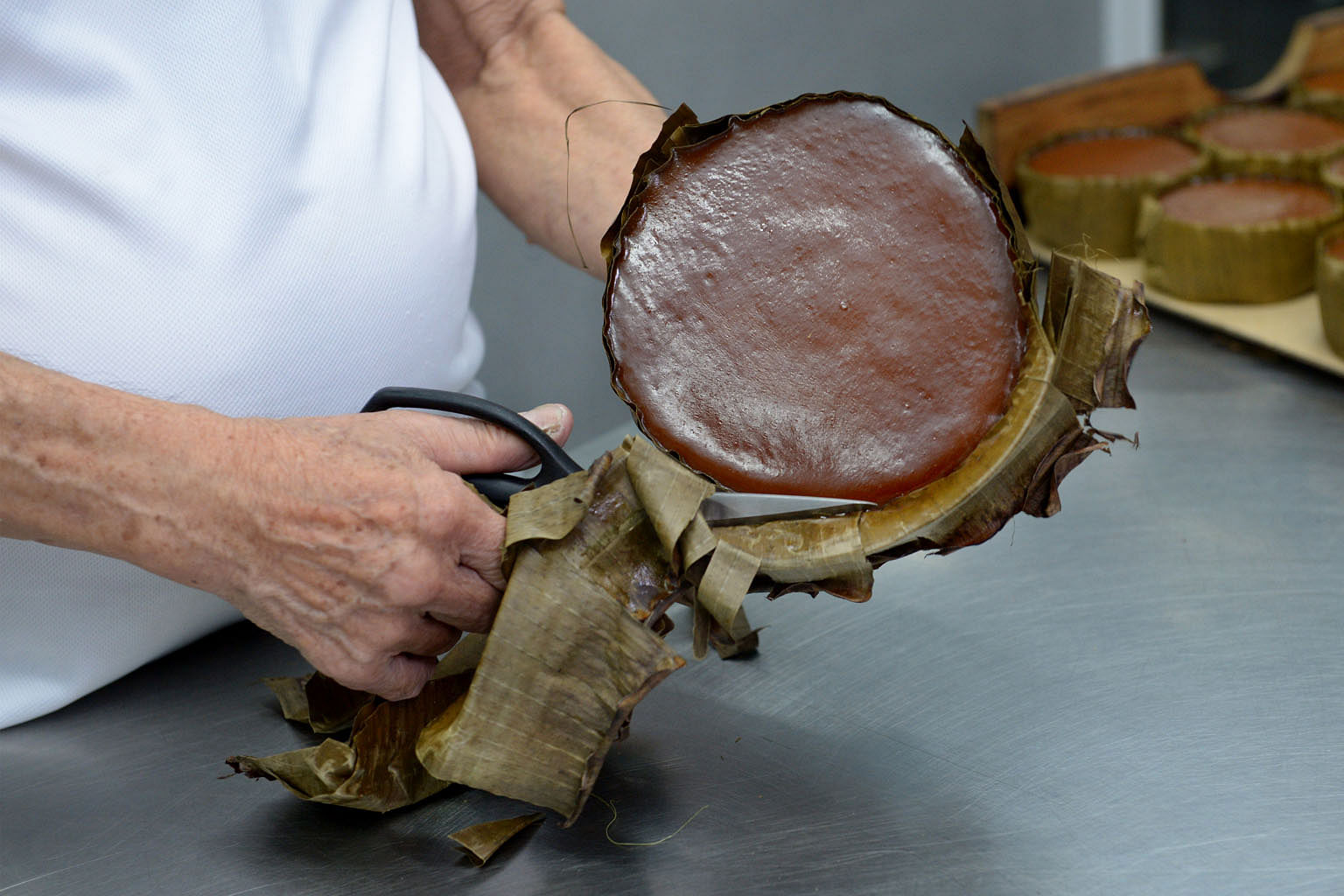
Making niangao is hardly a piece of cake. The process takes three days: the first day to soak the white glutinous rice; the second to grind it and the third to put the rice flour, which is mixed with water and brown sugar, into tins lined with banana leaves to be steamed for eight hours.
The time-consuming and labour-intensive processes deter new entrants to the business, says Mr Tham, who started making niangao and other traditional desserts when he was 10.
He took over the business in 1984 and handed it over to his son, Mr Ham Weng Seng, 55, in 2012.
•The main outlet of Chop Tai Chong Kok is at 34, Sago Street.
3. HarriAnns
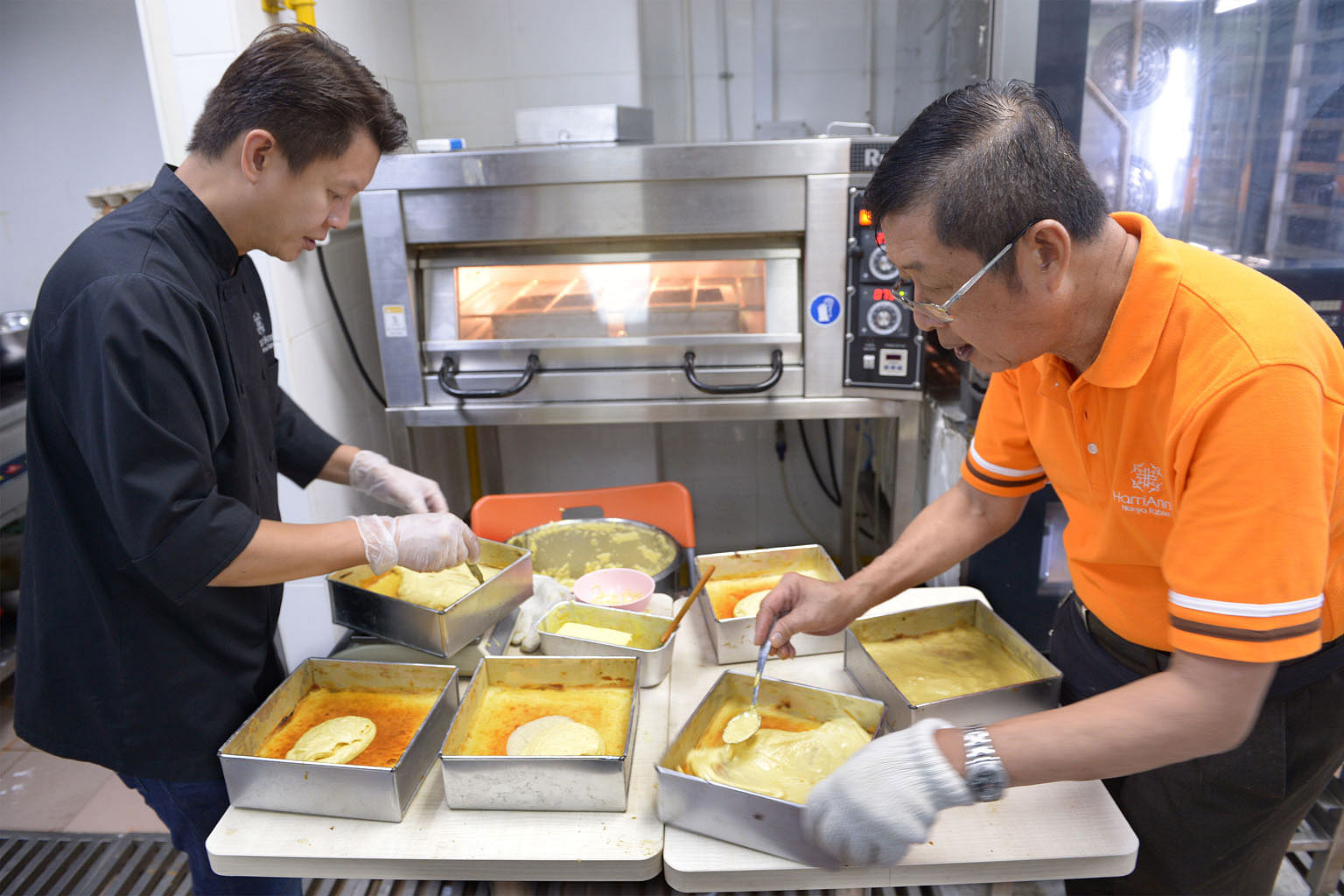
"It must be great-tasting, so that people do not mind the sinfulness," says Mr Alan Tan, 44, chief executive officer of HarriAnns, referring to the kueh lapis legit that he is making.
The cake is a popular item in Singapore, Indonesia and Malaysia, especially during festive seasons.
The multi-layered cake is the most labour-intensive item made by HarriAnns, which specialises in authentic Peranakan delicacies.
A 1.2kg cake takes half an hour to prepare and two hours to bake.
During the two hours, a new layer of batter is added and the cake returned to the oven to bake every five minutes or so, till there are 18 layers in total.
Mr Tan is a man on a mission. He wants to preserve the authentic taste of Peranakan food by using time-tested ingredients and processes.
He says the young are now more acquainted with international cuisines but few know about Peranakan cuisine, which has its roots in the region.
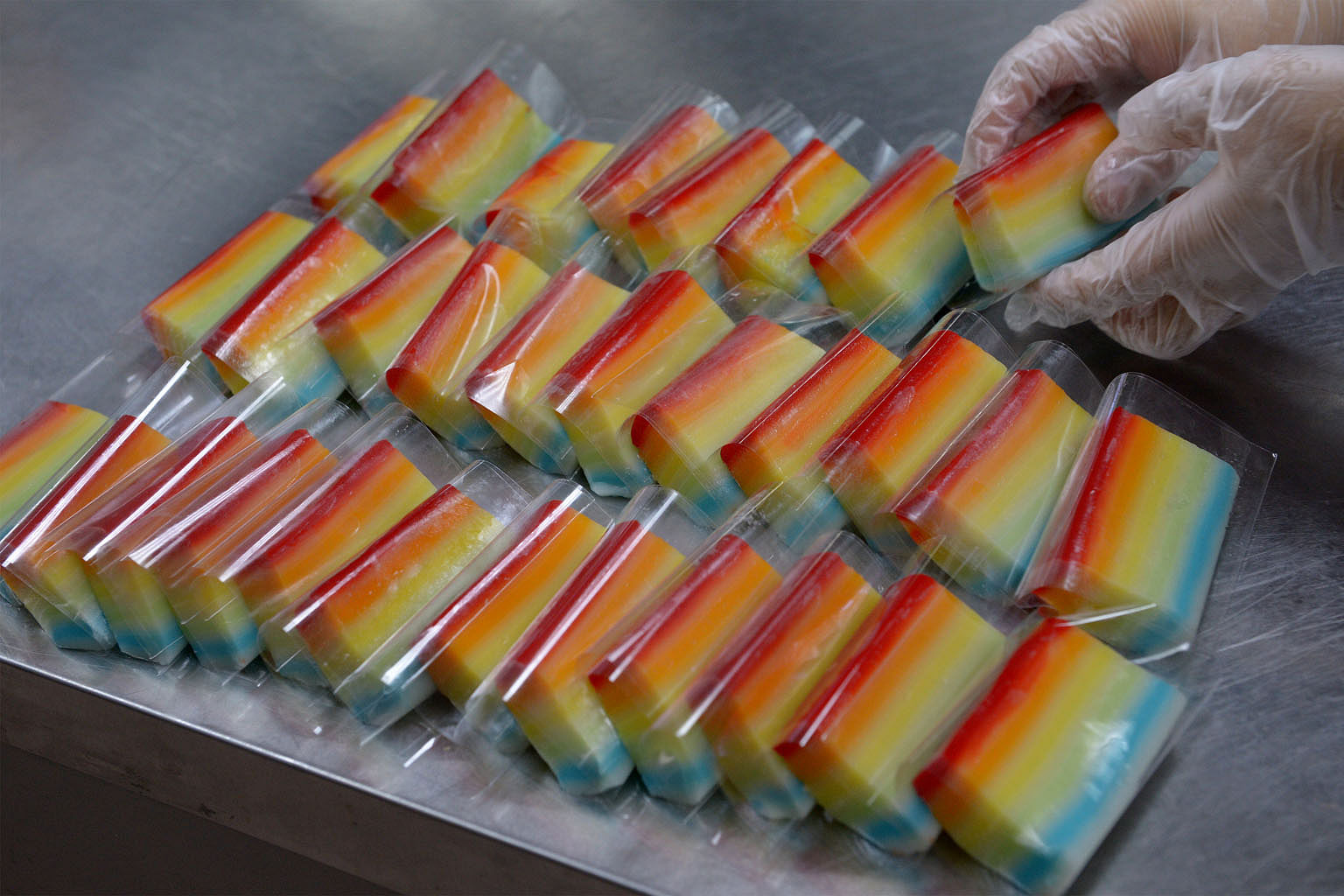
He hopes to pass down the know-how to the young kitchen staff so as to preserve the rich Nonya food heritage,
HarriAnns can trace its humble roots to the 1940s, when Mr Tan's widowed grandmother peddled glutinous rice and Nonya kueh from a pushcart to raise her two sons.
One of them is Mr Tan's father, Harry, now 69, who continued the trade. Mr Tan took over and expanded the business from 2013.
•HarriAnns' oldest outlet is at Tiong Bahru Market, Stall #02-25.
Join ST's WhatsApp Channel and get the latest news and must-reads.
A version of this article appeared in the print edition of The Straits Times on February 04, 2016, with the headline CNY goodies, the old-fashioned way. Subscribe
